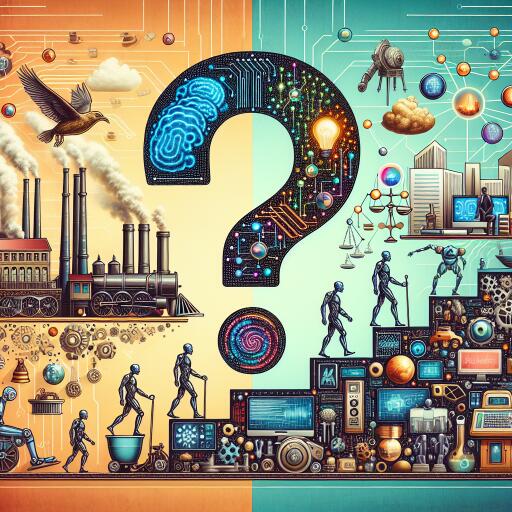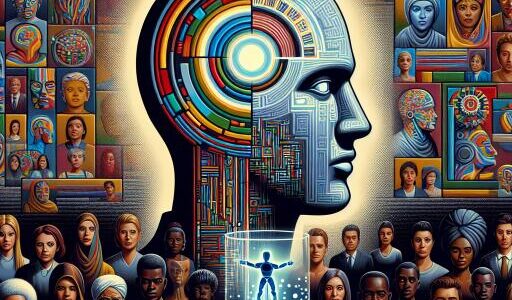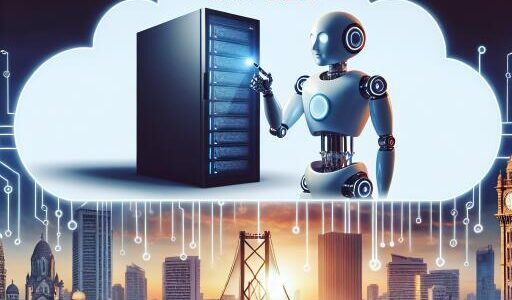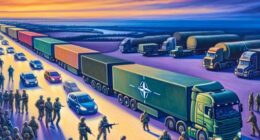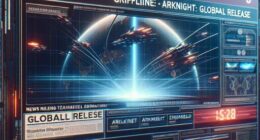The Age of AI: A Revolution or a Reckoning?
In 1997, when IBM’s Deep Blue defeated chess grandmaster Garry Kasparov, it was more than just a game—it was a historic moment marking the first time a machine bested a human in a realm of strategy and intuition. Fast forward to the present day: AI isn’t limited to just chess. It’s diagnosing diseases, approving bank loans, drafting legal documents, and even venturing into the creative domain of composing music. But at what cost?
Artificial Intelligence has transitioned from a futuristic idea to becoming the backbone of modern industry and day-to-day life. It has revolutionized sectors ranging from healthcare diagnostics to cybersecurity. However, the presence of AI comes with a paradox—it promises efficiency but simultaneously raises existential concerns about jobs, ethics, and control. Are we shaping AI, or is AI shaping us? Let’s delve into the dual-natured phenomenon of artificial intelligence.
The Brighter Side: Where AI Wins
The End of Human Error—or Just the Beginning?
Humans are fallible—we forget, overlook, and tire. AI, however, doesn’t. Within manufacturing, AI-powered robots perform repetitive tasks with remarkable accuracy, minimizing defects. In medicine, AI-driven algorithms are detecting cancerous cells in MRIs faster than even the most seasoned doctors.
Yet, it is important to note that AI isn’t infallible. Its precision is contingent on the data it is trained with. Errors in AI-derived diagnoses don’t stem from fatigue but from flawed data. When mistakes occur, who bears the responsibility—the engineer, the machine, or the algorithm?
24/7 Availability—but at What Human Cost?
AI doesn’t need sleep, food, or rest. AI-powered chatbots and virtual assistants manage customer inquiries around the clock, boosting efficiency.
But what ramifications does this have for human workers? If AI can tirelessly labor, does it render human work redundant, or merely more exhausting? In an AI-driven world, are we collaborating with machines, or are we competing against them?
Unbiased Decision-Making—or Just Hidden Bias?
In theory, AI operates without personal emotions and bases its decisions solely on data, which should eradicate discrimination. For instance, AI recruitment software is designed to select candidates based on qualifications rather than personal attributes such as gender, race, or age.
However, AI learns from human-generated data. When past hiring practices are biased, AI merely reflects that bias. In 2018, Amazon abandoned an AI recruitment tool because it discriminated against female applicants. The irony? The AI simply mirrored historical hiring patterns. So, is AI unbiased, or does it just reflect our prejudices back to us?
The Power of Automation—Liberation or Replacement?
AI thrives on handling repetitive tasks, freeing humans to focus on more complex, creative work. AI-driven IT support systems can resolve 75% of help desk requests, per Gartner. Similarly, AI tools like GitHub Copilot assist developers in writing code, enhancing productivity by as much as 55%.
However, where do we draw the line on automation? The World Economic Forum anticipates that AI could displace 85 million jobs by 2025. New roles will certainly emerge, but can displaced workers keep pace with such rapid changes?
The Not-So-Brighter Side: Where AI Falters
Job Displacement—Evolution or Extinction?
Consider Sarah, a financial analyst who excelled at risk assessment, only to find her expertise eclipsed overnight by an AI-driven financial model adopted by her company. Sarah’s narrative is shared by many. Whether it’s warehouse workers or lawyers, AI is reshaping industries. The essential question is—are we equipping the workforce for this transformation, or is it left to flounder amid the swell of automation?
The Price of Progress—Can We Afford AI?
The development of AI isn’t cheap. Crafting machine learning models requires vast computing power, skilled engineers, and ongoing refinement. This leaves many small businesses unable to afford AI, widening the chasm between tech giants and smaller enterprises.
Additionally, there’s an environmental cost—training a single AI model can produce as much CO2 as five cars over their entire lifetimes. In our pursuit of AI excellence, are we simply substituting one crisis for another?
Security & Ethics—Who Watches the Machines?
AI-enhanced cybersecurity has revolutionized digital defense, reducing breach detection time significantly. However, AI can be double-edged—what if it’s used for cyberattacks? Deepfake technology is already being deployed to manipulate elections, and AI-driven malware evolves more rapidly than traditional security measures can keep up.
AI offers protection, yet simultaneously gives rise to new threats. If AI can be hacked, manipulated, or weaponized, who is responsible for holding the kill switch?
AI in IT: The Future is Already Here
- AI-Powered Cybersecurity: AI predicts and counteracts cyber threats in real time. Companies like Darktrace and CrowdStrike are at the forefront of AI-driven security solutions.
- Automated Software Development: Tools like GitHub Copilot and Tabnine help developers code faster and with greater accuracy.
- Cloud Optimization: AI cuts cloud costs by predicting usage patterns, with solutions like Google Cloud’s AI-driven workload management reducing expenses by 30%.
- Smarter IT Support: AI chatbots tackle IT service desk requests, drastically cutting resolution times.
- AI-Driven Networks: Cisco’s AI-powered network management slashes downtime by 35%, ensuring seamless connectivity.
AI is not just supporting IT—it’s transforming how businesses construct, secure, and enhance their technological infrastructure.
The Bigger Question: Are We in Control?
Over the past years, the focus has shifted from building colossal AI models to actualizing real-world applications. While AI-generated content proliferates, debates about its genuine productivity benefits persist. In healthcare, AI has revolutionized diagnostics, but can it ever fully substitute the human empathy of a doctor? As AI navigates decision-making roles in courtrooms, boardrooms, and hiring processes, we are left pondering: should it?
The central query isn’t whether AI will replace us. It is: Are we proactively shaping AI, or are we merely advancing algorithms without a full understanding of their implications?
In a Nutshell
AI’s inevitability is clear. The future belongs to those who understand, harness, and adapt to it. Tomorrow’s workforce isn’t just about technical prowess—it’s about human intelligence, creativity, and adaptability.
At Fortray, we don’t just offer AI education; we prepare professionals to thrive alongside it. Whether you aim to become a data scientist, a cybersecurity specialist, or a cloud engineer, our programs are designed to future-proof your career. AI is here to stay— the question is, are you equipped to stay ahead of it?
Your move.
Related Items:
- Tech Stack for Your Business
Recommended for you:
- Upgrade Your Kitchen with Glen Appliances’ Induction Cooking Stove – A Smarter, Safer, and Faster Way to Cook
- Beyond VPNs – Why Encrypted Email is the Next Step in Digital Privacy
- Ireland’s Trusted Payroll Services for Accurate Salary Processing

